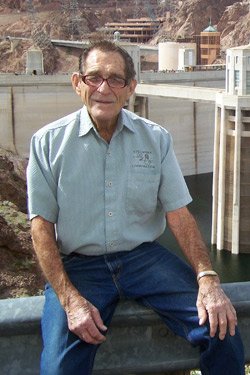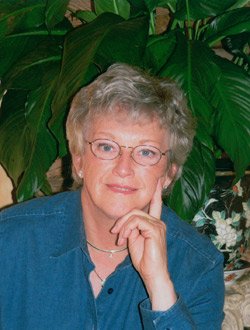
 Ralph Gasser
Ralph Gasser
They say you are the company you keep, so it’s only natural that Ralph Gasser is one of the newest inductees into the Decorative Concrete Hall of Fame. In Ralph’s 51 years of concrete work, he’s rubbed shoulders with the biggest names in the industry, and he credits many of them with his success.
Ralph got his start in the industry when he was just 16, when he worked as a laborer at a concrete company. At the time it was only a way to make ends meet, but Ralph quickly grew passionate about concrete and its possibilities. “Driving around Hollywood, I would be looking at all of the flat driveways and thinking about how much you could do,” he says.
Even when he was stationed in Vietnam after being drafted at age 20, he couldn’t shake his newfound passion for concrete. In the midst of the war, Ralph poured small concrete projects for the military in his spare time.
Upon his return, he felt the need to get out of Los Angeles. He moved to southern Oregon, but the winter temperatures fought with his love of concrete. After five years, he had enough and relocated to Redding, Calif., where he lives today. It was in Redding that he made his mark, literally, on the concrete industry.
The stamped concrete trend was beginning to heat up, but Ralph lacked the funds to start his own franchise under the current manufacturers. His solution was to make his own set of stamping and imprinting tools. His invention, the Shasta Seamless Texture Mat, was one of the first large-scale texture mats in the industry, and it was created alongside another member of the Decorative Concrete Hall of Fame.
“Mike Archambault was with me when we crafted off that rock here in Shasta County,” he says.
Despite his innovation, Ralph kept his focus on the artistic side, and he kept close ties with Archambault. It was through Archambault that Ralph had the opportunity to do all of the hardscaping inside Sleeping Beauty’s castle at Euro-Disney. He’s also had the opportunity to demonstrate architectural concrete in England, Johannesburg, South Africa, and Beijing, China. Decorative concrete has been a truly global affair for Ralph.
His career stateside has flourished too. He’s been involved in some high-end commercial and residential projects, and he has had the honor of winning over half a dozen national awards for his efforts. His most cherished award is for his work at Brenden Theatres in Modesto, Calif., which he worked on with fellow Hall of Fame member Mike Miller.
“I had the opportunity to take the talent that is in me and put it in a different direction that I fell in love with,” he says. “It’s like painting a wall. It can be confusing to people who don’t understand where I’m going until I’m done. I’m very blessed to have the opportunity.”
 Bill Stegmeier
Bill Stegmeier
Concrete pool decks may seem like a fairly standard job for the layperson, but during the course of his career, Bill Stegmeier transformed the pool deck industry through his innovations.
In the early 1950s, Bill owned a south Florida concrete construction firm that poured pool decks, as well as a chemical manufacturing company that supplied concrete additives.
At the time, many patios and pool decks in the region were constructed of coral stone. This material was taken from the ocean and cut into slabs and used much like flagstone is today. The work was beautiful, but because of the high humidity it would turn black with mold.
To solve this problem, Bill developed an alternative to the coral stone. First was a mixture of sand and cement on freshly poured concrete that duplicated the texture of the coral stone, as well as a chemical additive to make this material more workable. Most importantly, the product didn’t mold. In addition, it resulted in a nonskid surface, so it was perfect for pool decks. This solution became Bill’s first major contribution to the decorative industry.
Today, this invention is generally known as Cool Deck, as it has properties that cause it to be cooler than gray concrete in warmer climates.
A few years later, Bill left Florida and headed west to Tucson, Ariz. He brought with him the formulas for his concrete additives and founded Mortex Manufacturing. He also continued with his construction interests by installing swimming pool decks using his installation technique and additives.
Shortly thereafter, he taught others to install this system and hung up his trowel to focus on manufacturing.
After nearly a decade, Bill left Mortex Manufacturing and headed even further west, this time to northern California. It was there he founded Stegmeier Corp. in 1968, for which he is best known in the industry.
At about this time, Bill introduced the very first cantilever deck form made of expanded polystyrene (Styrofoam). His industry-changing forming product replaced precast coping stones, and this type of forming method is still used in the majority of in-ground swimming pool installations today.
“Bill’s creative solutions have always been rooted in solving challenges in construction applications. Unlike with many inventors, the profitability or marketability of an idea was always at the end of his process,” says Bill’s son, Bud.
In fact, many products in the industry today date back to one of Bill’s nearly 60 patents, including the removable top and other deck drains, a variety of deck forms, installation tools, and many more.
After nearly half a century in the industry, Bill passed the leadership of Stegmeier Corp. on to the team of partners, including his son Bud, who own and operate the company now known as Stegmeier LLC.
Even though Bill is enjoying retirement, he maintains an office at the company, regularly contributes to the development of new products and remains a valuable member of the Stegmeier team.
“Bill has always been the classic example of the American entrepreneur, but more importantly to me, my father has always shown me through example what true work ethics and integrity should be,” Bud says.
 Barbara Sargent
Barbara Sargent
For most people, retirement means a lifetime of sleeping in, taking vacations, and lunches with friends or family. Not for Barbara Sargent.
Sargent had a prestigious career at Lambert Landscape Co. beginning in 1972 until the early 1990s. She rose to the position of vice president, where she was responsible for marketing, customer service and the retail division. It was during her tenure there that she was introduced to Epmar Corp.’s Kemiko stains and coatings and the idea of decorative concrete.
As part of retirement negotiations with Lambert, she agreed to stay three more years, and in turn, would be allowed to take on the company’s distributorship of Kemiko products.
Why would someone give up the retired life to distribute a product that somebody else manufactured?
“I was so intrigued by the trendless concept,” she says. “Back then, decorative concrete staining was extremely commercial. The backbone of my business plan was to expand the interest of everyone involved in the residential marketplace.”
So for years, Barbara and her husband “Sarge” worked tirelessly to expand Kemiko’s presence. Through advertising, trade events and home improvement shows, Kemiko achieved national recognition as a leading decorative concrete supplier in the residential sector.
Thanks in part to their leadership, decorative concrete was no longer used just for commercial applications.
“We worked relentlessly to promote the ‘concrete concept.’ We were challenging the old idea of traditional floor building materials and convincing people to think decorative concrete could be in the home,” she says.
Although she and Sarge were the only two working on the mission full time, she’s quick to note they didn’t do it alone. Barbara formed an alliance with Jim Peterson of the Concrete Network website to promote residental decorative concrete in 1999, which she says gave her, and her vision, credibility. In 2002, she teamed up with Bob Harris of the Decorative Concrete Institute, which led him to begin teaching classes focused on using Kemiko products. “The association with Bob was to the betterment of Kemiko and my success in the industry,” she says.
After leaving her mark on the industry, Barbara retired for good in 2008. She now spends her days relaxing in her rural Texas home and traveling with Sarge. “When all is said and done, I’m proud of my through-line, meaning my start to finish. I started with and finished with passion,” she says.
 Byron Klemaske II
Byron Klemaske II
Byron Klemaske II is widely recognized as a leading authority and innovator in the decorative concrete industry, in part because of his position as executive vice president of operations at T.B. Penick & Sons Inc., a San Diego construction company celebrated for its architectural decorative concrete.
When Byron was just 17 years old, in the early 1970s, he took a leap of faith and went to work for John T. Dryden Inc., a San Diego concrete imprinting company. He quickly became intrigued with the possibilities of the Bomanite process used by the company, and went on to develop innovative decorative concrete products, tools, methods and finishes. He expanded uses and markets for decorative concrete and trained many other notable people in the industry.
After working for John T. Dryden, Byron and his two brothers formed Klemaske Brothers Concrete, and they made a name for themselves installing architectural finishes throughout the San Diego area.
Later, while working at Progressive Concrete, in Escondido, Calif., Byron was instrumental in developing Micro-Top, a troweled-on cementitious topping that is now manufactured by Bomanite, and Arte Povera, a coloration system utilized by Progressive Concrete.
“As I look back on (what achievement I think about the most), I truly believe it was the development of a decorative microtopping and taking it to the marketplace,” he says. “It was a good, heartfelt achievement.”
In 1999, Byron’s reputation for innovation and team-building caught the attention of Tim Penick, who was looking to expand the concrete division of his company. Byron joined T.B. Penick & Sons Inc. as vice president of operations and head of the firm’s Innovative Concrete Group. He assembled a top team of decorative concrete artisans, including his wife, Chris, his brothers, and several other family members. Today, T.B. Penick, founded in 1905, is recognized as one of the leading decorative concrete companies in the world.
After four decades in the business, Klemaske remains passionate about the concrete industry. Recently, he helped T.B. Penick secure a federal patent for a pervious concrete system called Pervious Concrete Elements. Always an innovator and visionary, Byron continues to push himself and inspire the industry to evolve in terms of sustainability, functionality, new products, new uses, new finishes and new concepts of architectural and design beauty.
Byron’s architectural and innovative concrete systems include work at Coastal Grand Mall in Myrtle Beach, S.C.; Tai Mall in Taoyuan, Taiwan; CityCenter in Las Vegas; Grapevine Mills Mall in Dallas, Texas; Opry Mills Mall in Nashville, Tenn.; Epcot Center in Orlando, Fla,; Disneyland Hotel in Anaheim, Calif.; Disney Hong Kong; Disney Shanghai and more than 600 Abercrombie & Fitch retail stores internationally, to name a few.
Byron has exhibited an ongoing commitment to excellence and innovation, and he has helped to shape the art and the business of decorative concrete. He is past president of the American Concrete Institute’s San Diego chapter.
Through his efforts T.B. Penick has garnered accolades that include recognition in Concrete Construction magazine’s annual CC100 list as the No. 1 decorative concrete contractor, mentions in Engineering News-Record magazine’s annual lists of the Top 400 Contractors and Top 600 Specialty Contractors, and several awards for safety. The company’s projects have won numerous honors, including Cornerstone Excellence Awards and awards from leading industry magazines, the ASCC Decorative Concrete Council, the ACI, the American Institute of Architects and the American Society of Civil Engineers.











